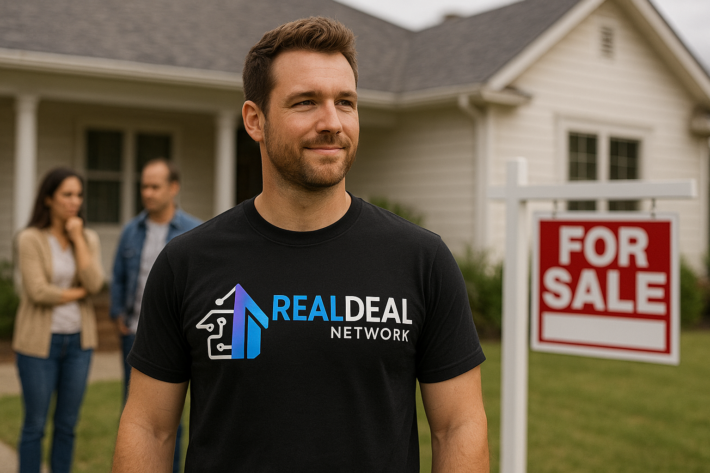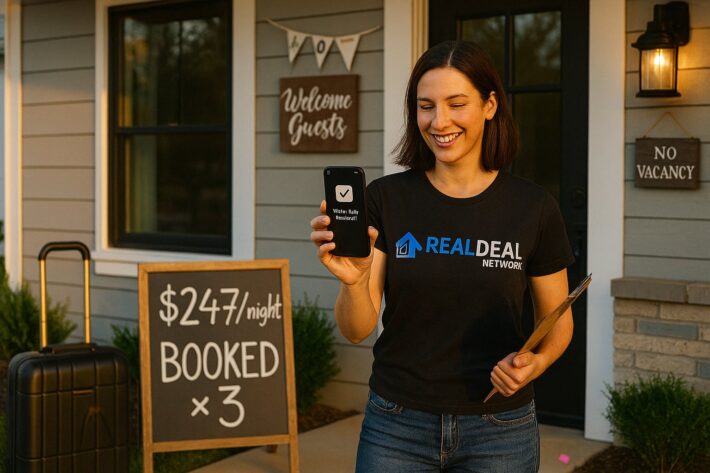Your guest room called… it wants to pay the mortgage.

Why co-living is turning spare rooms into smart returns in 2025.
Because vacant space is so 2022.
In our last post, we spilled the tea on why co-working spaces are taking over — flexible leases, built-in community, and savings that actually make sense (we slashed $10K/month and leveled up… just sayin’).
So naturally, the next question is:
If we’re already sharing where we work, what about where we live?
Enter: co-living… the trend that’s turning heads, leases, and a lot of real estate portfolios upside-down (in a good way).
🧠 So What Exactly Is Co-Living?
Imagine if your college dorm room grew up, got a design degree, and a 1099.
Co-living is the modern version of house-sharing — but more organized, less awkward, and designed for today’s mobile, community-hungry, affordability-conscious renter. Think: private bedrooms, shared common areas, flexible leases, and often, perks like weekly cleaning, utilities included, and even social events.
And here’s the kicker: while it’s great for residents, it’s even better for investors.
🔥 Why Co-Living Is Blowing Up in 2025
The demand isn’t coming out of nowhere. The housing market has shifted, people’s priorities have changed, and honestly… rent prices have gotten disrespectful.
Here’s what’s fueling the fire:
💸 1. Affordability Without Sacrifice
People still want to live in great locations… they just don’t want to take out a second mortgage to do it. Co-living makes prime spots possible without draining every cent.
🧑💻 2. Lifestyle + Flexibility
Digital nomads, creatives, remote workers… they want short-term leases, furnished rooms, and community. Co-living checks all the boxes.
🫂 3. Community > Isolation
Post-pandemic, we’ve all realized something: being alone all the time kinda sucks. Co-living offers built-in connection, whether it’s chatting over coffee or bonding over who actually forgot to take out the trash.
🔄 4. Turnkey Simplicity
No setting up Wi-Fi, no buying furniture, no arguing over who’s name is on the electric bill. Just move in and live your life.
📈 Why Investors Are Paying Attention
Now for the juicy part.
💰 Per-Bedroom Cash Flow
Renting a 4-bedroom house to one family might bring in $2,500/month. Renting it to four individual tenants at $850/each? You do the math.
🔄 Low Vacancy Impact
If one roommate moves out, you’re still cash flowing. Co-living spreads risk and keeps the income rolling.
🛠️ Repurposing Existing Spaces
You don’t need a skyscraper. Many co-living investors are converting single-family homes, duplexes, or small multifamily units to co-living setups.
🌱 Do Good, Do Well
It’s a solution to the housing crisis and a wealth-building opportunity. Social impact, meet smart investing.
🧩 So Where Do You Fit In?
You don’t need to be a tech startup founder or a minimalist influencer to tap into this strategy.
Whether you’re a curious newbie or a seasoned investor looking to diversify, co-living is worth a closer look. It’s not about giving up space — it’s about making space work smarter.
🚪 Ready to Learn More?
At the Real Deal Network, we explore every angle of real estate — from tax strategies and shared workspaces to new trends like co-living.
Join us for an intro meeting.
You’ll learn who we are, how our community works, and what tools we use (like the Investor Operating Software, aka IOS) to build wealth and stay ahead of the curve.
Because the future of real estate?
It’s not just location, location, location… it’s collaboration.







